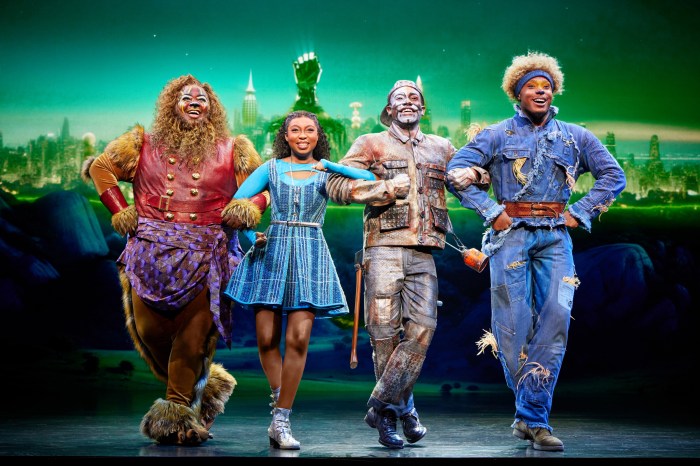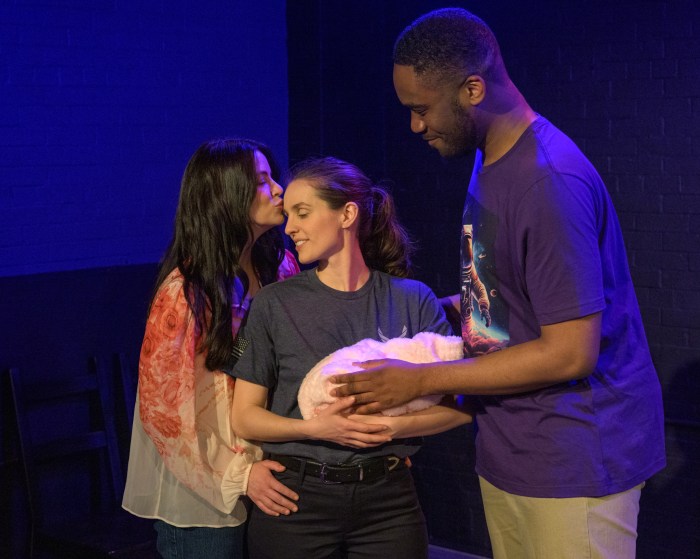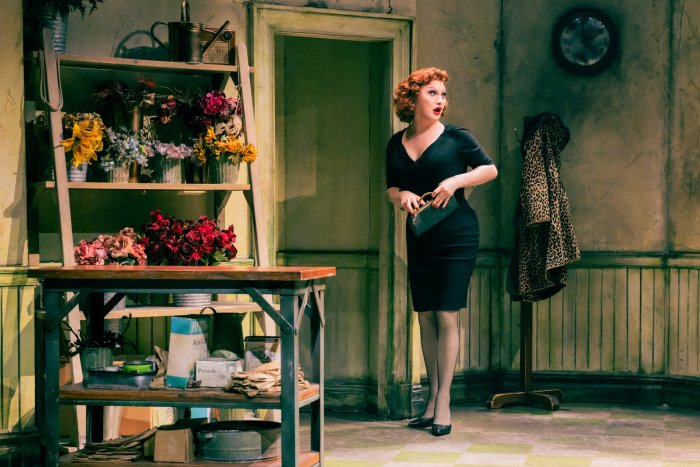In one section of Morgan Thorson's dance theater work “Faker,” four performers face off with two TV monitors, wildly gesticulating to Beethoven's “Ninth Symphony.” They gaze intently at the monitors, which are turned away from the audience, trying to mimic on-screen images culled from Pina Bausch, Martha Graham, a made-for-TV movie about Elvis Presley starring Kurt Russell, and stills of fields of flowers and the Taj Mahal.
“They embody the images spontaneously,” said Thorson during a recent interview in Minneapolis. “They are dealing with the lapses in time between the images and the real time it takes them to copy what they see. Meanwhile, of course, the images are constantly changing.”
Morgan Thorson
“Faker”
P.S. 122
150 First Ave. at Ninth St.
Jan. 17-23, Wed. & Sun. 7:30 p.m.;
Fri. & Tue. 9:30 p.m.,
Sat. & Mon. 5 p.m.
$20/$15 students & seniors;
212-352-3101 or ps122.org
What the audience sees is the fiercely obsessive behavior of, say, dancers trying to copy a choreographer's spontaneously generated moves. “Obsession is really wanting to understand every aspect of something, be haunted by something, want to know it inside out,” continued Thorson, whose own karaoke mania fueled “Faker.” “In karaoke you really feel the fabric and tension of the persona you take on. And since you are what you eat, whatever I am practicing at the moment gets integrated into my work.”
In one section of Morgan Thorson's dance theater work “Faker,” four performers face off with two TV monitors, wildly gesticulating to Beethoven's “Ninth Symphony.
Thorson, who moved to Minnesota from New York in 1991, brings “Faker” to Performance Space 122's COIL: A Winter Arts Festival. Originally commissioned by Walker Art Center and The Southern Theater in Minneapolis, the work features a cast of seven including New York City/Minneapolis dance and performance artist Karen Sherman and Kristin Van Loon of “Hijack.”
“Faker” began in 2004 with a trip to Las Vegas where Thorson observed impersonators channeling Michael Jackson, Britney Spears, Prince, and Elvis.
“The cheese factor runs high in these shows; they are really over the top, like soap operas. And I was trying to go over the top in my own work,” admitted the choreographer, who has gained a reputation for provocative dances ranging from in-your-face political works about issues of class and race to intensely physical formalism.
Long fascinated by celebrity impersonators and the American obsession with pop icons, Thorson was particularly taken with the Elvis impersonators. “Elvis can be whomever you want him to be because so much contributed to his personality. I can copy Elvis, like everyone else does, but recontextualize and make him mine,” she said.
While in Las Vegas she interviewed Brandon Paul, whom she describes as “a punk musician/painter gone Elvis,” a celebrity in his own right who performs all over the world earning up to $250,000 a year. While he considers his work performance art and maintains a healthy distance from his Elvis persona, he described some impersonators and audience members as Elvis-fixated, naming their children Lisa Marie, even calling their wives Priscilla. He once performed at a bridal shower where the prospective bride asked him, “Why did you leave Priscilla?”
“I'm interested in the gray area between the self and others,” said Thorson, and “Faker” constantly probes the margin between impersonator and imposter. At one point, Karen Sherman as the Ur-Elvis impersonator hurls herself into a maelstrom of iconic Elvis gestures-pelvic spasms, violent guitar licks-to live percussion by Bryan Billig, absorbing his drum licks as if they were electric shocks.
“She dies of a broken heart, not knowing who she is,” explained Thorson, who had her cast work with clips of Elvis impersonators to explore various renditions of the physical and psychological tension underlying his hyperbolic movement style.
“Faker” also explores timely issues of authenticity, which Thorson defined as “people stealing from one another to both know and validate what they think is real.” While Elvis has been criticized for co-opting material from artists like Arthur Crudup and Chuck Berry, Thorson believes that the country boy who grew up around Gospel and R&B was just following the music he loved.
On a broader level, “Faker” plays with the squishy boundaries between illusion and reality. It begins as a rehearsal where, as one character says, “performance creeps in the back door.” Performers argue as sinister stagehands manipulate the power relationship between the people onstage and the backstage people who make things happen. Thorson wittily massages the lust for fame endlessly regurgitated on TV reality shows where blind ambition meets throbbing sincerity.
Take the scene where Sherman and Chris Schichting lie on their stomachs, hands clasped helplessly behind their backs, earnestly singing into a couple of microphones held out to them like bones to drooling puppies. The song is the schmaltzy “Up Where We Belong,” and as the microphones are maneuvered up out of reach, the singers lurch to their feet in perfect harmony. It's as if “Fear Factor” had invaded “American Idol,” with a nod to “Waiting for Guffman.”
Thorson compared the ways in which we absorb the work, the ideas, the personas of others to a kind of creeping contagion-“people not knowing they are taking on other people's affects.” “Faker” offers up the tantalizing possibility that faking it may be a higher form of cannibalism-ingesting spirits of the celebrated and admired by consuming their flesh and being transformed by it.

































